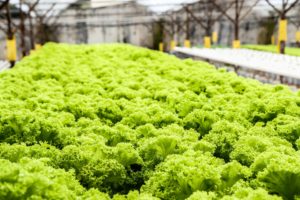Science and Tech Group Report August 2019
31st August 2019
David Stonier-Gibson
Hydroponics at Moorabbin
Lettuces? Basil? Radishes? What should we grow in our hydroponics setup? Interestingly that is the question least occupying the minds of us young folk in the Science and Technology (Sci/Tech) SIG. OK, so at 73 I can’t really call myself young, but young at heart, I hope, and hanging out with a bunch whose median age is probably under 30 is certainly enlightening.

So whether it’s tomatoes or African violets we grow, at this stage the “Hydroponics at Moorabbin” project is more about the journey than the destination. The project is bringing together a group of individuals with diverse backgrounds and skills in a project where they can work together towards a shared goal. It is a relatively complex project, with mechanics, plumbing, chemistry, lighting, instrumentation and control. Oh, and I almost forgot, botany, and should probably add project management.
We have even found a good reason to put it all online.
We had our first reasonably focused meeting on Sunday 18th August. There was a fairly free-flowing discussion around the mechanical structure and grow containers, and also about the electronics and lighting.
We are aiming at a strong metal framework that can hold two Bunning’s plastic bins for two grow areas, stacked one above the other. A couple of the people are right into steel work, welding etc, so they will be coming back with reasonably firm ideas and design sketches. And hopefully a rough costing! Under the two grow areas there will be a space for ancillary equipment such as pumps. The design has to be such that water spills or leaks can’t cause damage. The system will almost certainly be on castors so it can be wheeled around to show off, maybe in future club open days.
Because the system will be sitting essentially unattended for up to 3 weeks between Sci/Tech meetings, the aim is to have it online so it can be watched over and managed remotely. This raises the question of the control and monitoring system. It’s also where I have some expertise – instrumentation and control. But I have zilch knowledge about Internet connectivity, whereas many others do. So we agreed on an architecture that would allow multiple processor boards (read: Arduino) to be bussed together on a simple serial data bus, and use a more powerful board (ESP or rPi) for master control and IoT functions, and very likely to support a webcam. This has the benefit of making it simpler for several people to work on different aspects in their own processors, and simply join together on the bus. With an Arduino Nano clone costing about $5, that is not overly extravagant.
The lighting will be LEDs, almost certainly using RGB LEDs so we can control the mix of wavelengths in software. One intriguing possibility is to use the LED strings that are now available, and affordable, which contain lots of RGB LEDs but where each one can be individually controlled for colour and brightness. That opens up the possibility of having different zones within the one grow space, so we can experiment with the effects of different colour mixes. This is an area NASA have done a lot of research on.
There are a number of parameters that can be measured, relevant to plant growth: Electrical conductivity (EC), oxygen reduction potential (ORP), pH balance, soil (growth medium) moisture, temperature. Some of these are relatively simple to do, some are difficult to get right (ORP, pH). We expect to start out with the basic and add on as the need or motivation arises. The modular bus architecture will help provide flexibility for such expansion.
It is still early days yet, we haven’t yet “broken ground”. But the hydroponics project is a nice example of a project that can encourage teamwork and collaboration.




